Thorium’s UnderMine released in 2019, bringing its offbeat brand of roguelike dungeon crawling to PC. Nearly two years later, UnderMine is out on Nintendo Switch, but the question is how it stacks up on a system with no shortage of quality roguelikes already.
The answer is very well, actually. UnderMine doesn’t break new ground, and with the level of polish and strong design here, it doesn’t really need to.
UnderMine Review: Hi Ho, Hi Ho, Back to the Mines We Go
UnderMine starts with a simple premise. You’re a peasant. It means you do what others tell you to do and don’t ask questions. That’s what the resident all-powerful wizard thinks anyway.
He summons you to his wizardly abode once the game begins and tasks you with venturing into the mine (and beyond) to solve the mysteries behind the strange earthquakes occurring recently. He’d do it, but… well, y’know: he’s important, and you’re a peasant.
So off you go, ill-equipped for the task and with no real clue what to do. When you die — and you will die, make no mistake about that — that’s it. As with other roguelikes, you’ll lose a big chunk of your money and all the artifacts uncovered on the way, but your particular peasant is dead too.
Another one hops down into the fray, a new name and fresh face in a never-ending parade of peasants marching to their certain dooms that the wizard can’t even be bothered to notice.
There’s a pervasive quirkiness in UnderMine that goes well beyond the comically callous wizard. You’ll find all manner of lovely weird folk underground, from talking mushrooms desperate to give their sporelings new life to shopkeepers trapped behind locked doors who, with nothing else to do, set up shop anyway. Behind a locked door in a dungeon.
UnderMine has a wider story you’ll gradually dig out the further you go, and the earthquakes are just the beginning. It’s a reason for five distinct dungeon areas brought to life with charming pixel art, and while the overarching story isn’t bad by any means, the visual identity and strange world unfolding around you stand out much more strongly than the actual story.
Another of UnderMine’s stand-out features is the dungeon design itself.
UnderMine’s approach to roguelike dungeon crawling is a more accessible one than many. Each dungeon area is relatively contained, meaning you won’t be searching through dozens of rooms vainly trying to find an exit before you either die in-game or stop caring in real life.
It takes a significant piece of the grind and annoyance out of restarting and makes sticking with UnderMine for long sessions easier.
The roguelike elements themselves also help with that. You’ll lose all your special artifacts upon death, true, but not all your gold. The hardy peasant(s) keep enough of it to spend on goods back at the base, and assuming you’ve bothered to free the various shopkeepers and smiths you come across, you can upgrade your peasant with a better chance at survival.
Enhancements, such as bag durability, are a must so you retain even more gold after death. Then there are improvements for your pickaxe, your health, your bombs — it’s all pretty standard, though useful, stuff.
You can say the same for UnderMine’s gameplay and dungeon design in general, but it’s proof that innovation and darn good gameplay don’t always go hand-in-hand.
Chances are, you’ve seen a good bit of UnderMine elsewhere. The ultimate goal is reaching the bottom-most area, gathering as much gold and other precious materials along the way. Your peasant has a canary, like all good miners, plus a standard attack, a ranged one, and a bomb attack.
There’s a cave area, a dungeon area, and so on. Some foes, such as bats, slimes, and giant centipedes with suspiciously glowing rear ends, are straight out of Zelda and numerous other RPGs. Each dungeon room is full of traps, from pressure plates to something very similar to Zelda’s blade trap foes, and it’s hard not to see them as imitations in some way.
How UnderMine handles these things is what raises it above being a knock-off, though. The action element, while simple, just feels good. UnderMine is also very fair, even when it’s brutal. The randomly generated rooms might be full of gold and health-restoring food, or the layout could have a legion of monsters and a maze of pressure plates that might as well scream D E A T H.
UnderMine’s signature quirkiness shines through in dungeon design and helps keep things fresh too. Slime creatures called Pilfers steal your gold if you aren’t fast enough (and make amusing sounds when you punt them into oblivion). In some rooms, monsters, overeager in their pursuit of peasant flesh, walk into traps or fall down pits while you stand in the corner and quietly wait for them to finish destroying themselves.
Even in the rooms that make you fight for your life, you almost always have the tools needed to make it out alive. The simple combat system means there’s no massive learning curve, and like Hollow Knight, there’s no cheap gimmick responsible for your demise. You always realize what your mistake was and how to try and fix it next time.
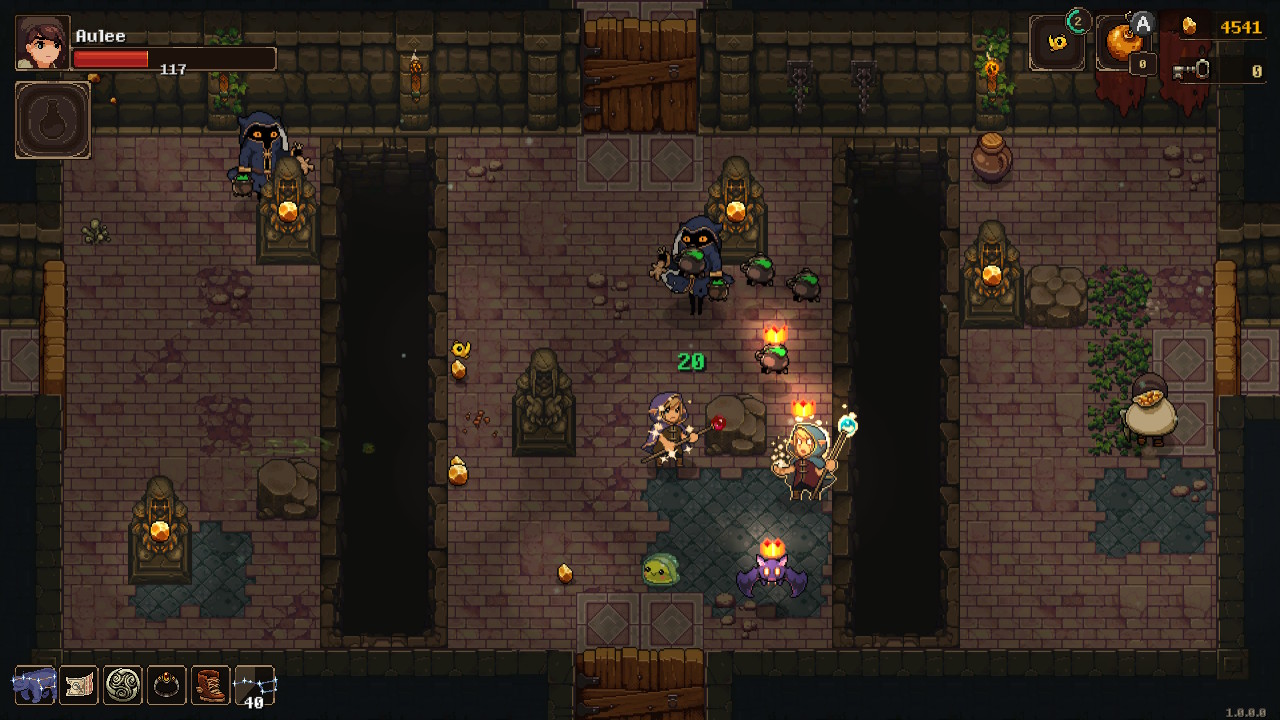
That even applies to boss fights, despite almost every boss and mini-boss being a damage sponge to a nearly insufferable degree.
Fortunately, there’s plenty of help offered along the way. Most floors have a shop with at least one food item for sale, and you can exchange gold for vouchers to expand certain inventory categories.
Some artifacts offer an edge in exploration, such as increasing recovery effects or turning bombs into gold. Even with the genre’s staple randomization governing layouts and rewards, UnderMine always leaves you feeling encouraged to press ahead or try again.
A few blemishes pop up from time to time, though they certainly don’t ruin the experience.
Some item descriptions are rather vague. One, for example, says you absorb gold. Do you literally pull it out of the walls or just draw it to you once it falls? A few layouts are also confusing. I had to Google what to do with certain statues or purple flames in secret rooms because there’s absolutely no way to learn it in-game without experimenting with your already-scarce resources.
These are minor in the grand scheme, but they’re also a surprising oversight in predicting the player experience in an otherwise solidly designed game.
One other thing worth mentioning is the pixel art. It’s rare finding a roguelike you can call cozy, but UnderMine definitely fits the bill with its warm colors and nostalgic, chunky pixels. If Stardew Valley were a dungeon crawler, it’d look like UnderMine.
UnderMine Review: The Bottom Line
Pros
- Clever dungeon design that rewards longer play sessions
- Quirky and fun presentation helps make UnderMine stand out amongst other roguelikes
- Strikes a good balance between challenge and accessibility
Cons
- Some evident imitations in certain design areas
- Vague item descriptions
- Bosses have too much health given the limited combat options available to you
UnderMine is perfectly content to work in existing mine shafts instead of boring new ones, and it’s a stronger experience for it. It’s a comfortable, rewarding dungeon crawler with a unique identity and plenty of fun on offer.
If you’re looking for something fresh and innovative, you’ll want to look elsewhere. Just know you’re missing out on a darn good time if you do.
[Note: Thorium provided the copy of Undermine used for this review.]

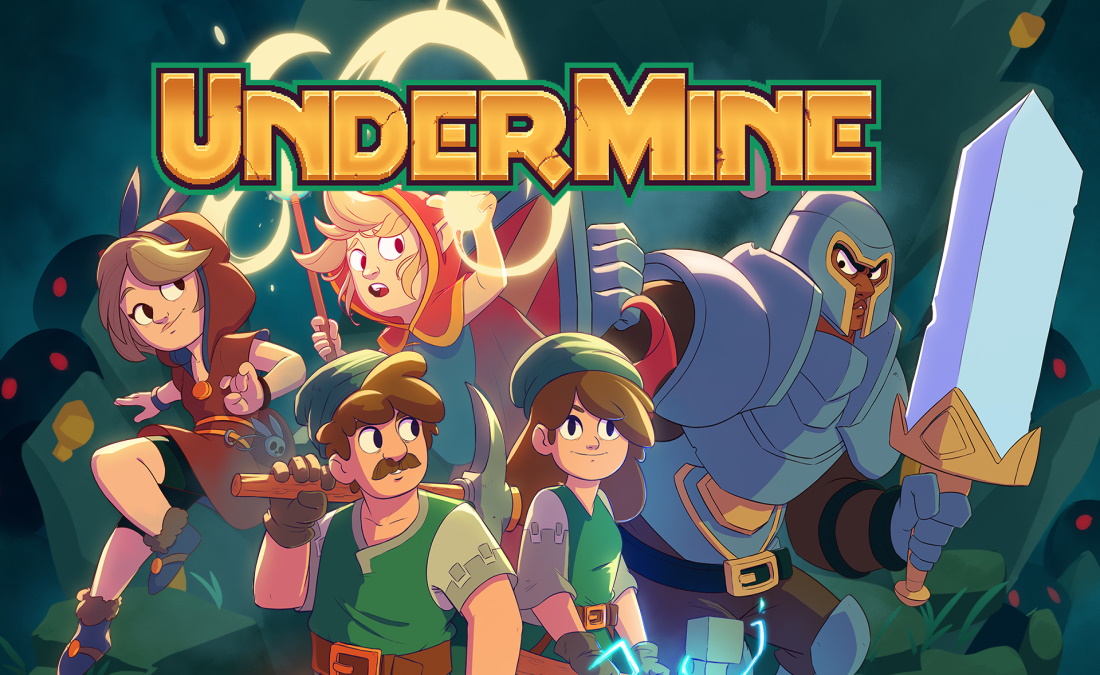
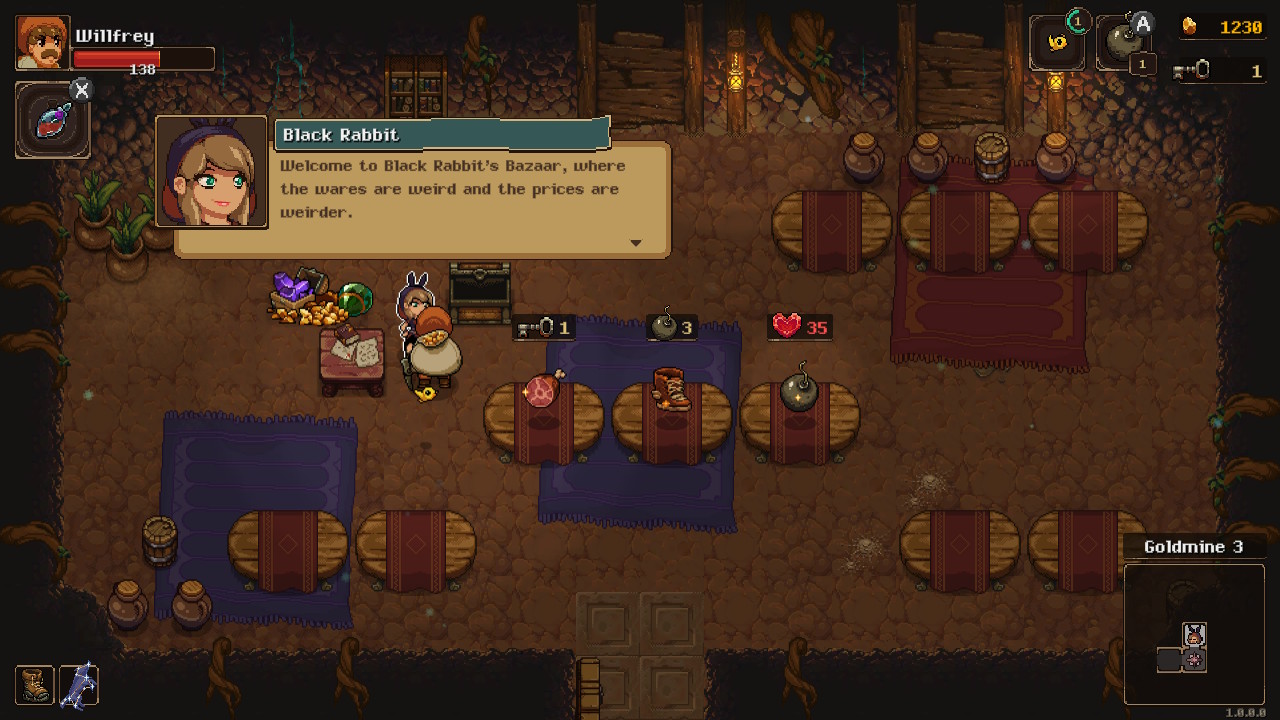
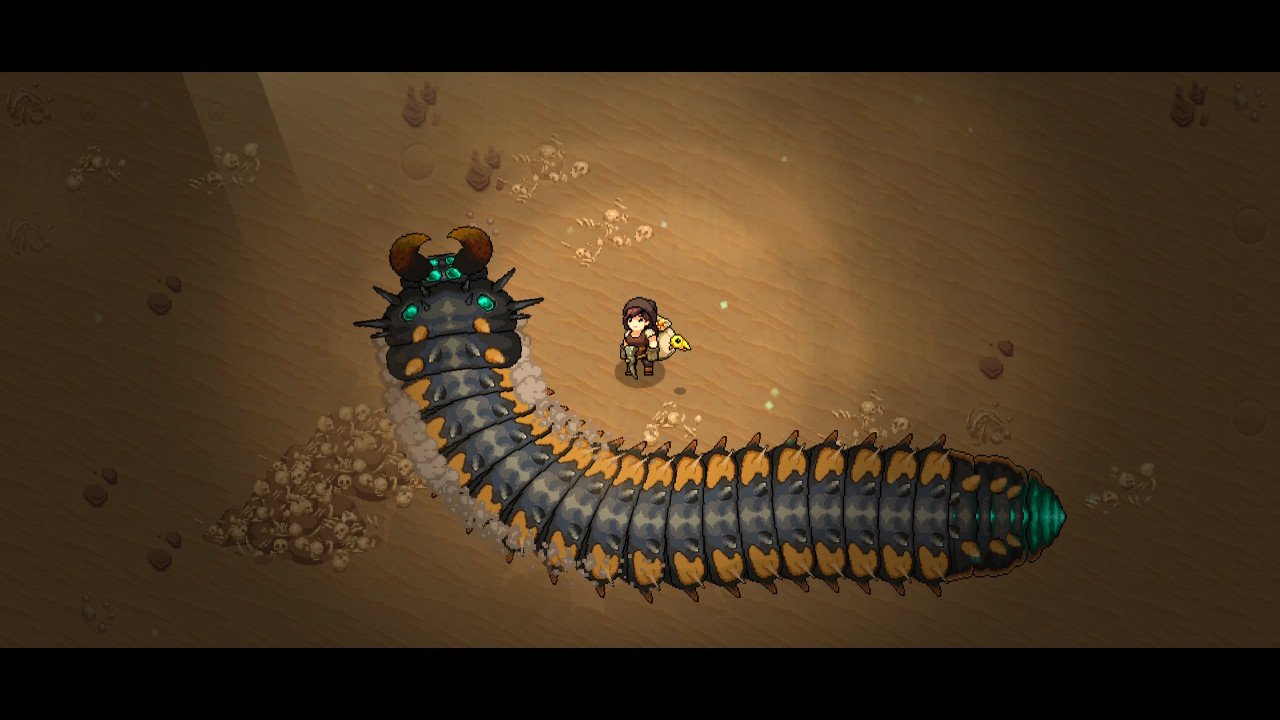
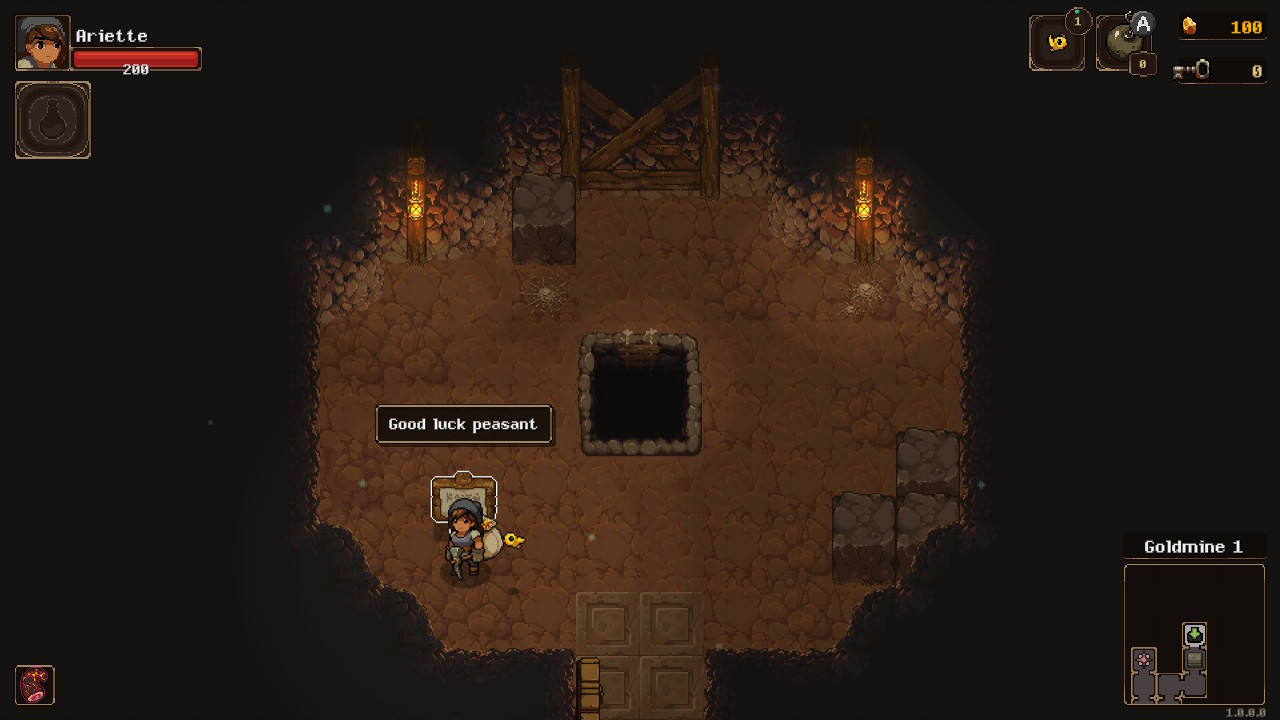








Published: Feb 12, 2021 01:29 pm